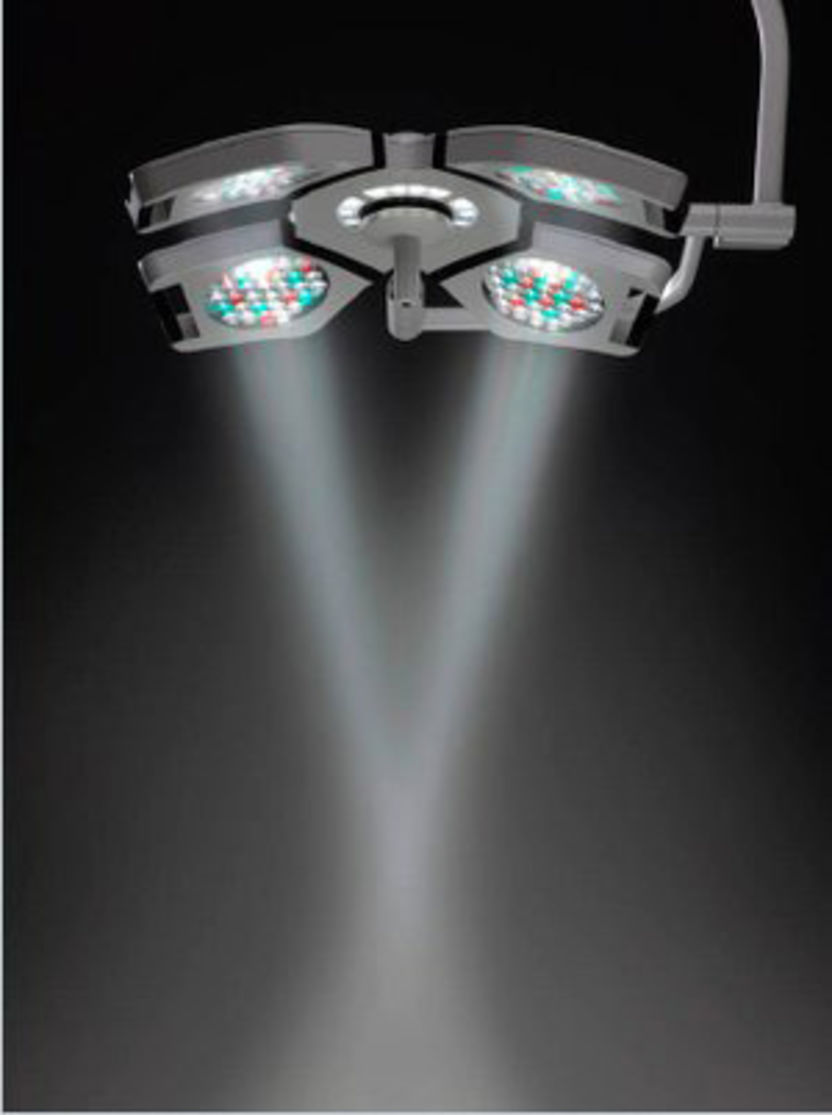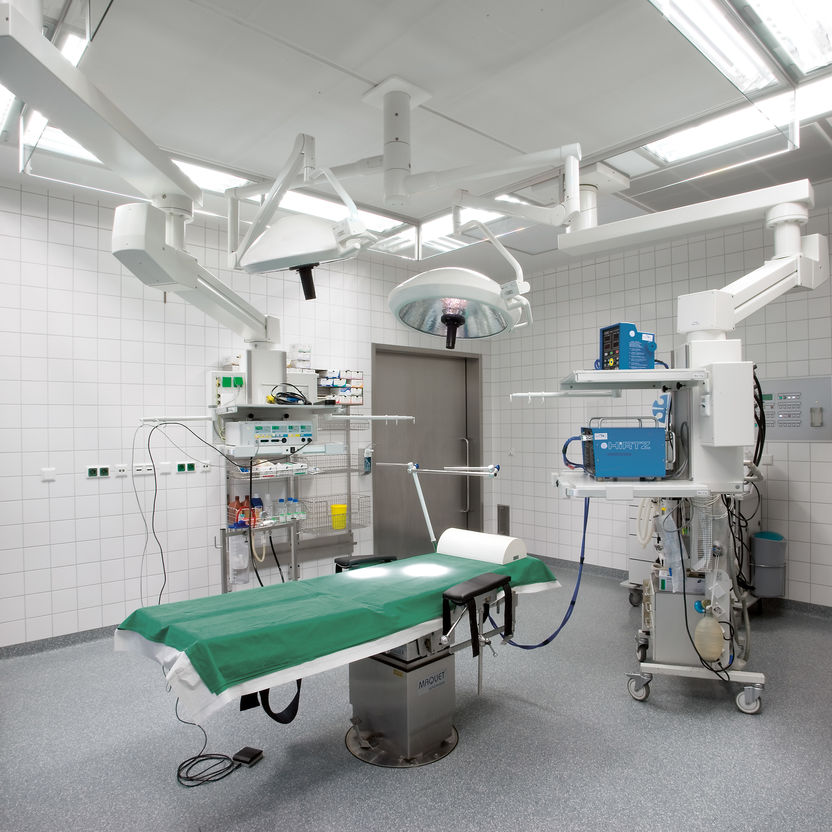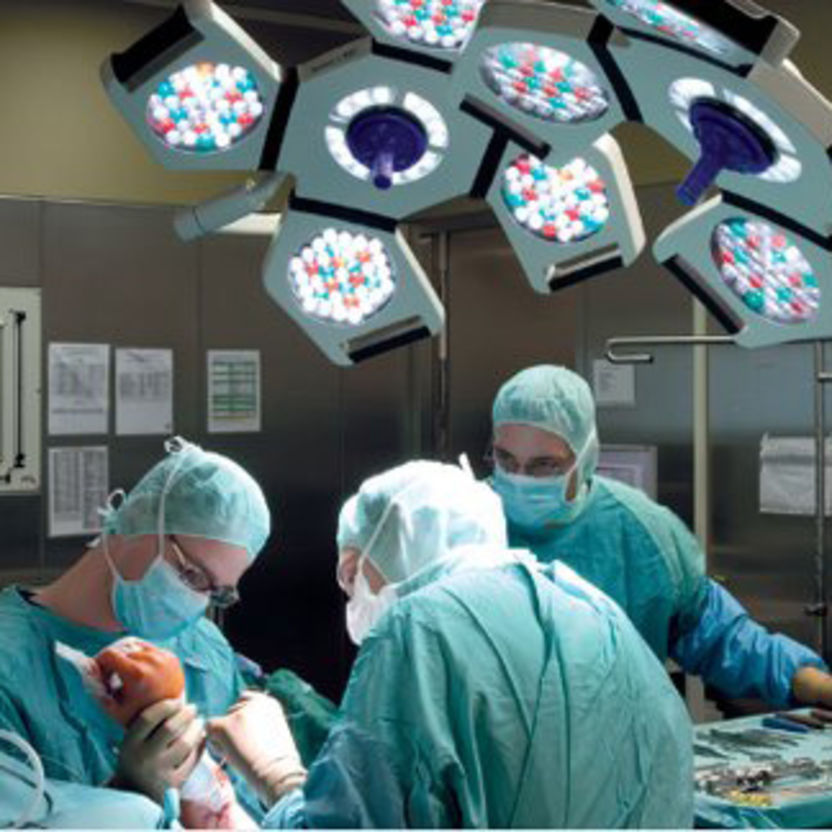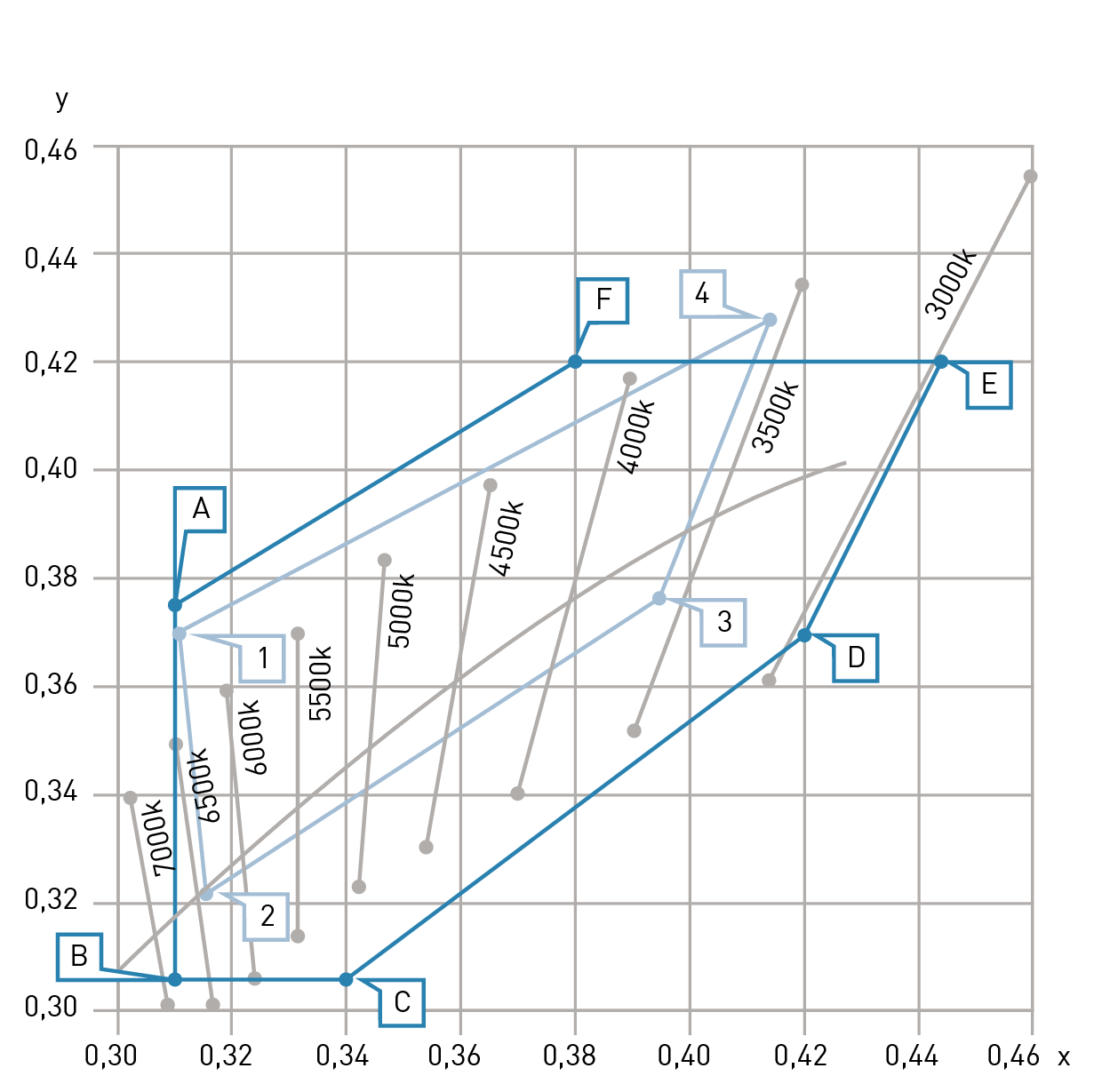
Figure 3.126: Surgical LED luminaire
Postbox 1960
D-59753 Arnsberg

Figure 3.126: Surgical LED luminaire
The operating field is the site of the surgery itself. It is usually surrounded by blue and green drapes with a reflectance similar to the actual operating site to harmonise the luminance of operating site and surroundings. For surgical luminaires, EN 60601-2-41 "Medical electrical equipment – Part 2-41: Particular requirements for basic safety and essential performance of surgical luminaires and luminaires for diagnosis" applies. The operating field illuminated by the surgical luminaire can be adjusted, often it is a circle with a diameter of roughly 20 cm. Luminaire-specific data are attached to the products based on standardised measuring conditions (see fig.). This standard contains, among other things, data on
illuminance (up to 160.000 lx),
size of the illuminated field in relation to illuminance gradient and parameters for avoiding disturbing shadowing effects caused by the surgical team and insufficient illumination of deeper-situated operating wounds,
light colour defined for continuum light sources (e.g. halogen lamps) by their coordinates in the chromaticity diagram, which needs to be between 3.000 K and 6.700 K,
surgical luminaire lamp colour rendering index Ra = 85 to 100 – chromaticity coordinates of the spectrum which need to adhere to a defined range (see figure),
overall irradiance at 1 m distance from the luminaire, which must not exceed a maximum of 1.000 W/m² to avoid excessive temperatures, and
relation of irradiance and illuminance, which must not exceed a maximum of 6 mW/(m² · lx).



Figure 3.127: Light colours for surgical luminaires and general OR lighting according to EN 60601-2-41 between ca. 3.000 K and ca. 6.700 K (areas A to F) and for treatment luminaires as well as general lighting in dental examination and treatment rooms according to EN ISO 9680 in the range between 3.500 K and ca. 6.500 K (areas 1 to 4)
Figure shows an excerpt from the chromaticity diagram, where every colour is defined using x and y coordinates. The continuous black curve represents the Planckian curve, which describes the colour temperature of solidifying platinum and approximately resembles the light colour of thermal radiators such as halogen lamps. The straight lines represent the most closely resembling colour temperature of gas discharge lamps, e.g. fluorescent lamps.
Figure shows a surgical luminaire according to EN 60601-2-41 with energy-saving, durable LEDs (light-emitting diodes). The cold, IR and UV-free radiation of LEDs limits heat intensity on the head of the surgeon and tissue dehydration. The small construction of LEDs facilitates an ideal, flat design for 4-part OR lights which provide shadow-free illumination of the light field. The aerodynamic outline and the low luminaire surface temperature of only ca. 28 °C avoid disturbance in the laminar air flow in the clean controlled atmosphere around the OR table.
The LED’s white light features colour rendering Ra ≥ 95 across all performance levels of central illuminance in a range between 22.000 lx and 160.000 lx and – depending on the degree of perfusion – can be adjusted in steps between the colour temperatures 3.800 K and 4.800 K. The light field diameter can be adjusted between 200 mm and 300 mm. A special endoscopy mode switches the OR light to green light, which improves visual conditions in the endoscope and on TFT monitors.
The high efficiency of LED OR lights with a luminous efficacy of ca. 100 lm/W compared to the mere ca. 10 lm/W in OR lights with halogen lamps reduces connected load by the factor 10 for the same illuminance. At 40 times the service life of halogen lamps, LEDs (> 40.000 hours) only require lamp replacement after years compared to halogen’s 4-5 months at 10 hours of operation per day. Special electronics can balance the LED’s degradation or decrease in luminous flux by adjustin automatically back to 100% of the initial value.